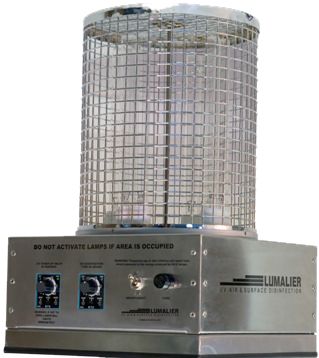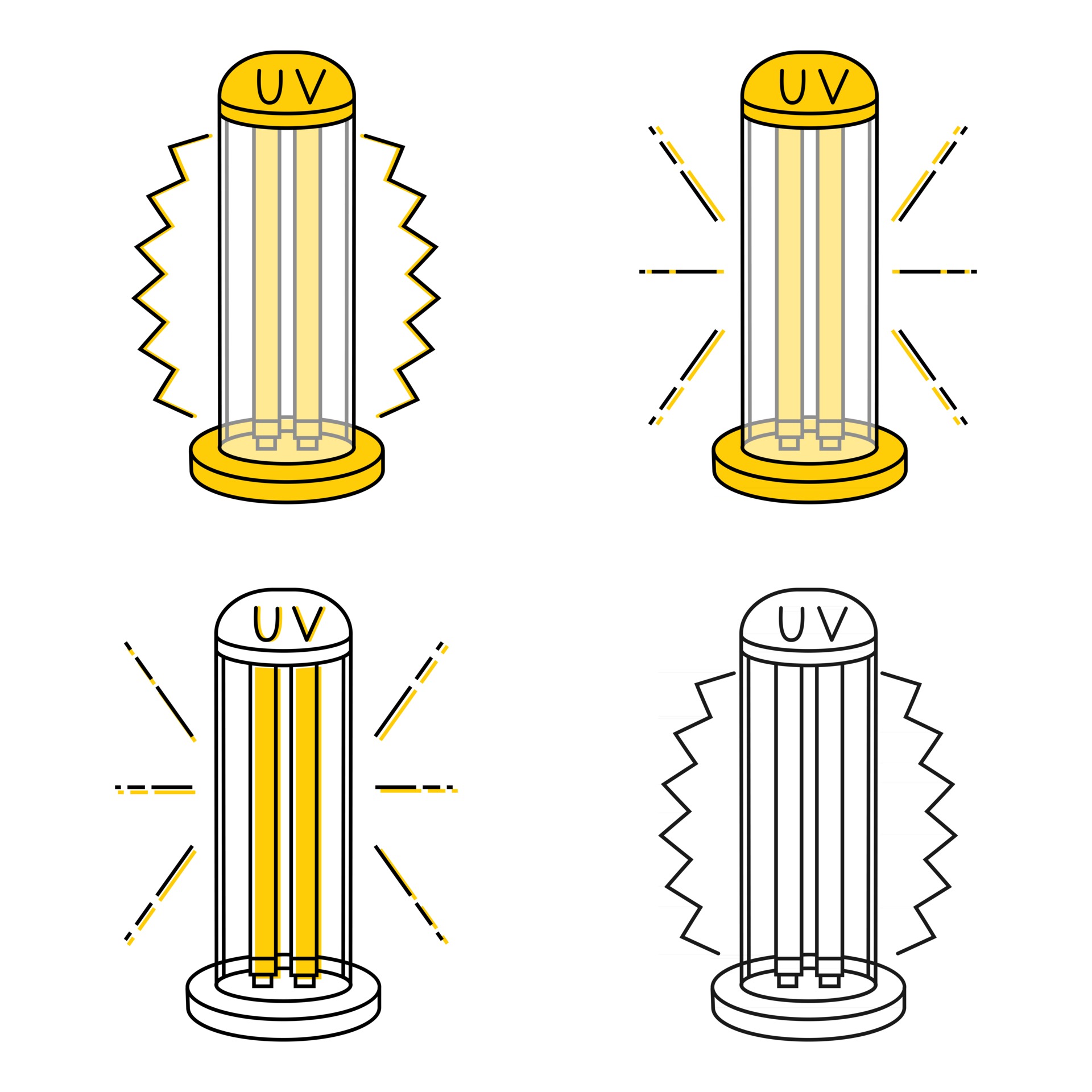Exploring the Conveniences of Far UVC Light: Reinventing Indoor Air Quality
One such solution that has actually gained attention is Far UVC light. Exactly how specifically does Far UVC light work? In this discussion, we will explore the remarkable globe of Much UVC light and discover its potential in changing the means we safeguard our indoor environments.
Just How Much UVC Light Functions
Far UVC light functions by sending out short-wavelength ultraviolet light that has the capability to pass through and inactivate microorganisms. Unlike typical UV light, which can be harmful to human skin and eyes, far UVC light has a shorter wavelength that is soaked up by the outer layers of human skin, preventing it from getting to the underlying living cells. This makes it a secure and efficient alternative for continual disinfection in busy rooms.
When much UVC light is emitted, it communicates with the DNA and RNA of bacteria, including microorganisms and infections, disrupting their capability to duplicate and causing them to end up being inactive. The high energy of the short-wavelength light damages the molecular structure of the genetic material, stopping the microorganisms from spreading out and recreating.

Additionally, far UVC light can be conveniently integrated into existing illumination components, making it a cost-effective service for a variety of applications, including health care centers, colleges, workplaces, and public transport. Its ability to constantly decontaminate busy rooms without posing a danger to human health and wellness makes much UVC light an encouraging modern technology in the area of indoor air quality management.
Far UVC Light's Effect on Airborne Pathogens
The influence of much UVC light on air-borne virus is substantial in lowering the transmission of infectious diseases and improving indoor air quality. Much UVC light describes a certain range of ultraviolet light that has a wavelength in between 207 and 222 nanometers. Unlike traditional UVC light, which is dangerous to human skin and eyes, far UVC light has actually been located to be safe for human beings while still working versus virus.
Studies have revealed that much UVC light has the capability to suspend a vast array of airborne viruses, including the flu infection and the coronavirus (far-uvc). These microorganisms are transferred with respiratory droplets, and by making use of much UVC light, it is possible to decrease their practicality and prevent their spread
Among the crucial advantages of using much UVC light is its capacity to reach all areas of an area. Unlike various other sanitation approaches that might have limited reach, much UVC light can be set up in above lighting components, making sure that the entire space is dealt with. This makes it especially effective in jampacked areas such as medical facilities, colleges, and public transport.
Additionally, far UVC light can be made use of constantly without positioning a threat to human health and wellness. It can be carried out as component of an extensive method to enhance indoor air quality by lowering the focus of airborne pathogens. By including far UVC light right into existing air flow systems, it is feasible to produce more secure and healthier interior environments.
Wellness Advantages of Far UVC Light
Using much UVC light provides numerous wellness benefits, making it a beneficial tool in promoting public wellness and safety. Much UVC light has actually been found to successfully kill airborne virus, such as infections and microorganisms, without harming human skin or eyes. This makes it a perfect remedy for disinfecting interior settings and decreasing the danger of infections.
Among the key health and wellness advantages of much UVC light is its ability to fight the spread of airborne conditions. Researches have shown that far UVC light can successfully suspend infections like flu and tuberculosis. By installing far UVC light fixtures in public areas, such as colleges, workplaces, and health centers, the transmission of these diseases can be considerably decreased.
Moreover, far UVC light has been found to be safe for continuous direct exposure, as it does not cause skin damage or raise the threat of skin cancer cells. This is because of the truth that far UVC light has a restricted range of penetration in human skin, avoiding any harm to deeper layers.
Along with its direct influence on airborne pathogens, much UVC light can additionally have indirect health and wellness benefits. By decreasing the presence of hazardous microorganisms airborne, it can boost interior air high quality, resulting in a decrease in respiratory system signs and symptoms and allergic reactions.
Far UVC Light's Role in Lowering Irritants

Much UVC light, with its wavelength in the variety of 207 to 222 nanometers, has actually been shown to be reliable in inactivating infections, germs, and fungis. Current studies have actually also shown that it can properly minimize the presence of allergens in interior spaces. When far UVC light is produced, it engages with the DNA and RNA of microorganisms, damaging their hereditary material and avoiding their duplication.
Far UVC Light's Prospective in Public Spaces
With its tried and tested effectiveness in minimizing irritants and inactivating bacteria, much UVC light holds fantastic prospective for application in public rooms. Public spaces, such as healthcare facilities, colleges, airports, and offices, are commonly crowded and vulnerable to the spread of air-borne diseases. Integrating far UVC light innovation in these areas can substantially boost interior air top quality and reduce the transmission of damaging microorganisms.
One appealing application of much UVC light in public areas remains in air flow my company systems - far-uvc. By setting up far UVC lights in a/c systems, the modern technology can decontaminate the air as it flows, effectively decreasing the concentration of airborne viruses and bacteria. This technique can assist protect against the spread of diseases such as covid-19, influenza, and consumption, advertising a much healthier and more secure environment for residents
Additionally, much UVC light can be used in the sanitation of often touched surfaces. High-touch areas in public spaces, such as doorknobs, hand rails, and lift buttons, can nurture a plethora of virus. By tactically putting far UVC light sources see this in these locations, the modern technology can continually sanitize surfaces, reducing the threat of contamination and transmission.
In addition, the use of much UVC light in public rooms is safe for human exposure. Unlike standard UVC light, which can be unsafe to human skin and eyes, far UVC light has been verified to be safe and safe for continual procedure in busy spaces. This makes it an optimal option for boosting interior air top quality without posing any type of health and wellness dangers to people.
Verdict

Much UVC light works by discharging short-wavelength ultraviolet light that has the ability to pass through and inactivate microbes. Unlike standard UV light, which can be hazardous to human skin and eyes, much UVC light has a shorter wavelength that is soaked up by the outer layers of human skin, stopping it from reaching the underlying living cells. Much UVC light refers to a specific variety of ultraviolet click here for more info light that has a wavelength in between 207 and 222 nanometers. Unlike traditional UVC light, which is harmful to human skin and eyes, far UVC light has actually been found to be risk-free for human beings while still being efficient versus pathogens.
Unlike traditional UVC light, which can be unsafe to human skin and eyes, far UVC light has actually been proven to be safe and non-toxic for constant procedure in occupied areas.